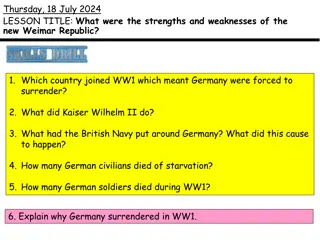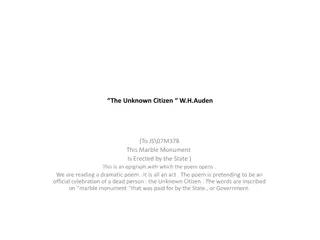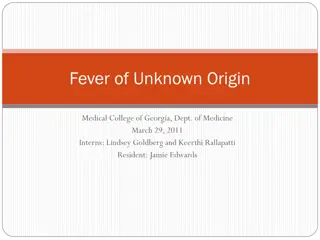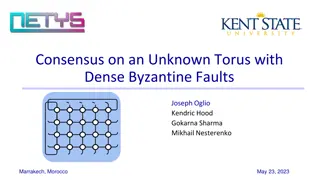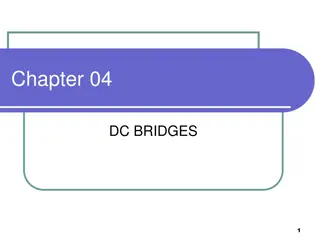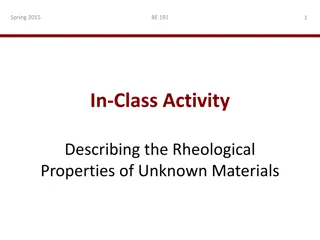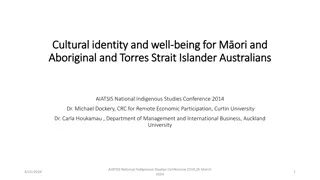Australians in WW1: Into the Unknown
In June 1914, the assassination of Archduke Franz Ferdinand triggered a chain of events leading to World War I. Australia, as part of the British Empire, declared support for the war effort. Despite the distance from the theatres of war, over 300,000 Australians enlisted, with significant casualties. The declaration of war sparked enthusiasm among volunteers like Archie Barwick who eagerly joined the conflict, highlighting the impact of WW1 on Australia's population.
Download Presentation

Please find below an Image/Link to download the presentation.
The content on the website is provided AS IS for your information and personal use only. It may not be sold, licensed, or shared on other websites without obtaining consent from the author.If you encounter any issues during the download, it is possible that the publisher has removed the file from their server.
You are allowed to download the files provided on this website for personal or commercial use, subject to the condition that they are used lawfully. All files are the property of their respective owners.
The content on the website is provided AS IS for your information and personal use only. It may not be sold, licensed, or shared on other websites without obtaining consent from the author.
E N D
Presentation Transcript
Australians in WW1 Into the unknown.
In June 1914 a Bosnian Serb assassinated Archduke Franz Ferdinand, the heir to the Austro-Hungarian throne. As a result, Austria declared war on Serbia. Russia, which had an alliance with France, supported Serbia, while Germany sided with Austria and invaded neutral Belgium to enter France.
In response to the invasion of Belgium, whose neutrality it had guaranteed, Britain declared war on Germany on the 4th of August 1914. Australia remained staunchly loyal to the British empire and so declared its full support for the war effort.
Although the theatres of war were very Although the theatres of war were very distant from Australia, its membership of the distant from Australia, its membership of the British Empire ensured that there was strong British Empire ensured that there was strong (although not universal) public support for (although not universal) public support for involvement in the war. involvement in the war. In 1914, Australia's Prime Minister, In 1914, Australia's Prime Minister, Andrew Fisher, immediately Andrew Fisher, immediately promised Australian support for promised Australian support for Britain 'to the last man and the last Britain 'to the last man and the last shilling'. shilling'.
The Australian population in 1914 was less than five million. involved: - Enlisted and served overseas: 324,000 - Dead: 61,720 - Wounded: 155,000 (all services) - Prisoners of war: 4,044 (397 died while captive) (Source: Australian War Memorial at http://www.awm.gov.au/)
Britains declaration of war was met with great enthusiasm and thousands of volunteers, keen for adventure, rushed to join up. One volunteer was a 24-year-old farmer by the name of Archie Barwick To my great joy and no less surprise, I was requested to report at once to Victoria Barracks in Sydney for medical inspection. I think I threw two or three somersaults."
Most young men were proud to support the Empire and looked forward to the glory of battle, and many expected it all to be over quite swiftly. In addition, troops were paid six shillings a day, which was attractive in those tough financial times. And so, the Australian Imperial Force was formed in 1914. New Zealand showed similar enthusiasm and formed an Expeditionary Force.
On the 1st of November 1914 the first troop convoy of Australians and New Zealanders set off from Albany, Western Australia, destined for the war in Europe. We lifted our anchors and the great fleet set sail. The Australian ships led the way and the New Zealanders brought up the rear. - Archie Barwick
En route the convoy received an SOS signal from a communication station in the Cocos Keeling Islands that had been raided by the German light cruiser Emden. HMAS Sydney was ordered to investigate, and soon found itself in a deadly fight after Emden opened fire on it, inflicting serious damage. Sydney fired back, finally destroying the Emden and rescuing the survivors.
All of a sudden I heard a terrible noise on deck. I hopped up & there was a notice pinned on the wall to the effect that the Sydney had destroyed the Emden. The boys were delighted, seeing as how it was our boat that done the trick. Archie Barwick News had now been received that, instead of heading for Europe, the men were bound for Egypt, where they would complete their training.
Questions Questions 1. 2. 3. 4. 5. What date did Britain declare War on Germany? Who was Australia s Prime Minister in 1914? What was Australia s population in 1914? What was the reaction in Australia to Britain s declaration of war? Why do you think Australians reacted the way they did to the declaration of war? Provide 3 reasons When did Australian troops first set off to join the war? 6. Use the following links to research the history of SMS Emden: http://www.awm.gov.au/units/unit_12749.asp http://www.awm.gov.au/blog/2013/10/01/education-memorial-finding-elusive-count-von-spee 7. Why would HMAS Sydney have helped wounded sailors from the Emden and kept them on board? 8. The sinking of the Emden was commemorated in Australia with souvenirs including jugs, cups, and saucers (see image below). Why would these have been made and bought? What does this suggest about Australia s attitude to war?
Disembarking in Cairo, they set up a large tented camp, where two new divisions the 1st Australian Division and a composite New Zealand and Australian Division were formed into a new body, the Australian and New Zealand Army Corps. The name was quickly shortened to ANZAC.
Accompanying the men was a journalist named Charles Bean, who had been appointed as Australia s official war correspondent. Here he set down his first thoughts on the all-volunteer Australian Imperial Force They re not heroes. They do not intend to be thought or spoken of as heroes. They re just ordinary Australians, doing their particular work as their country would wish them to do it. And pray God, Australians in days to come will be worthy of them.
Training in Egypt was based on earlier wars, with rifles, bayonets and bugles, and the men were largely inexperienced. They were far from the main European theatres of war ... but within months, their situation would change dramatically. The British War Cabinet was looking for ways to help break the stalemate on the Western Front. Their idea was for a naval attack upon Turkey, which had entered the war on Germany s side.
After several unsuccessful attempts to force a passage through the straits of the Dardanelles, it was decided that a landing should be made on the Gallipoli peninsula. And so, British, French, Indian, Australian and New Zealand troops totalling some 70,000 men were assembled and shipped out to Gallipoli.
The Anzacs The Anzacs The name became famous with the landing of the Corps The name became famous with the landing of the Corps on the Gallipoli Peninsula, Turkey on 25 April 1915. It on the Gallipoli Peninsula, Turkey on 25 April 1915. It was the first military engagement in which was the first military engagement in which significant numbers of Australians fought and died significant numbers of Australians fought and died as Australian nationals. as Australian nationals. The Anzacs were part of an Allied campaign against The Anzacs were part of an Allied campaign against the Turks to control the the Turks to control the Dardenalles Dardenalles and thus open the way to Constantinople and Eastern Europe. way to Constantinople and Eastern Europe. and thus open the
This engagement ended with the evacuation of This engagement ended with the evacuation of Australian troops on 19 Australian troops on 19 - - 20 December 1915. 20 December 1915.
The Gallipoli campaign resulted in the deaths of: 7,600 Australians and 2,500 New Zealanders and the wounding of: 19,000 Australians and 5,000 New Zealanders.
Location of Australian forces Location of Australian forces First Australian troops sent to Egypt to defend British interests against the Ottoman Empire (Turkey), 1915 Engaged in battle on the Gallipoli Peninsula against the Turks on 25 April 1915 Evacuated from Gallipoli 19 - 20 December 1915 The Australian Imperial Forces (AIF) then reorganised; expanded from two to five infantry divisions Transferred to France from March 1916 AIF mounted division remained in the Middle East





